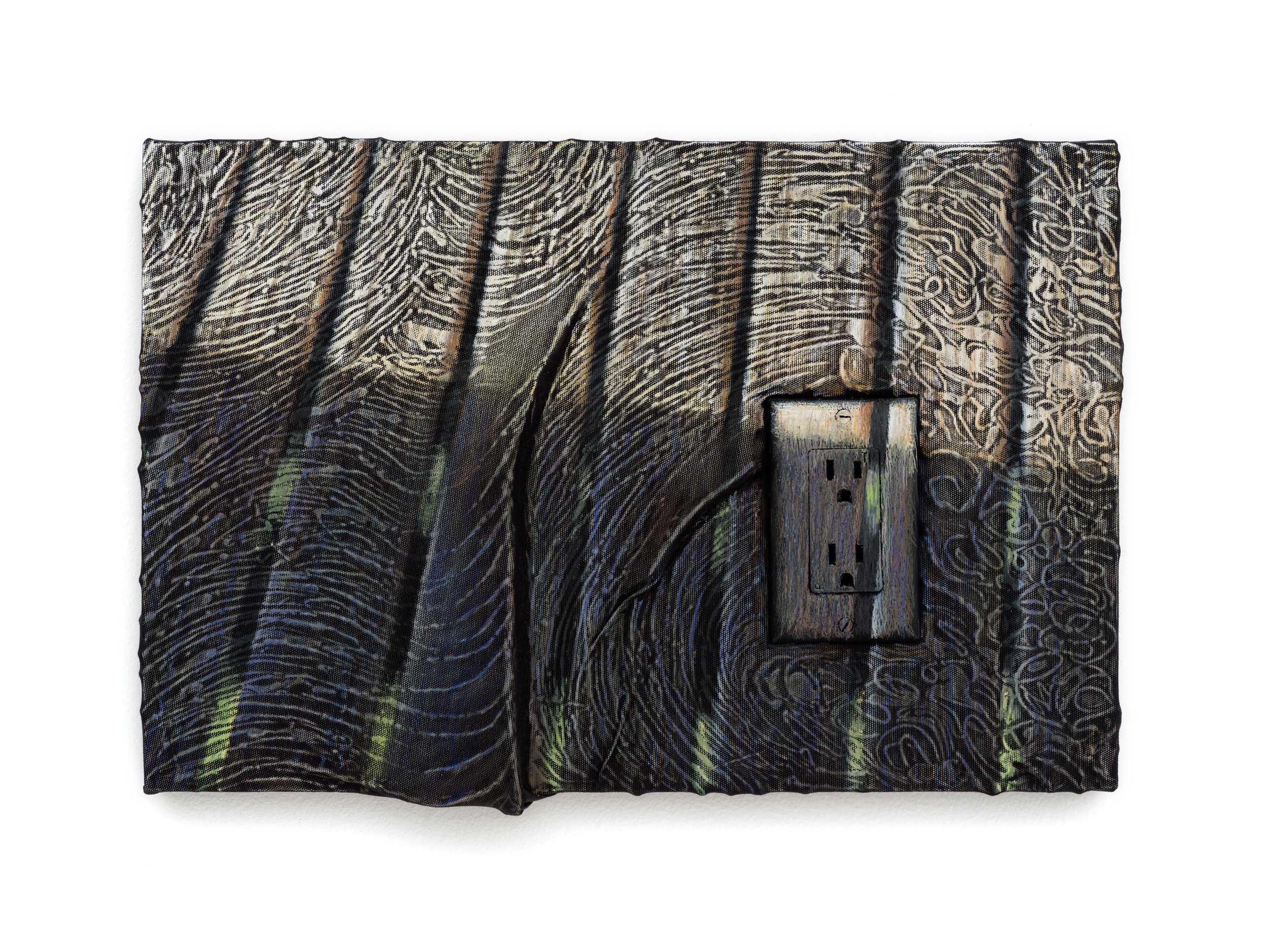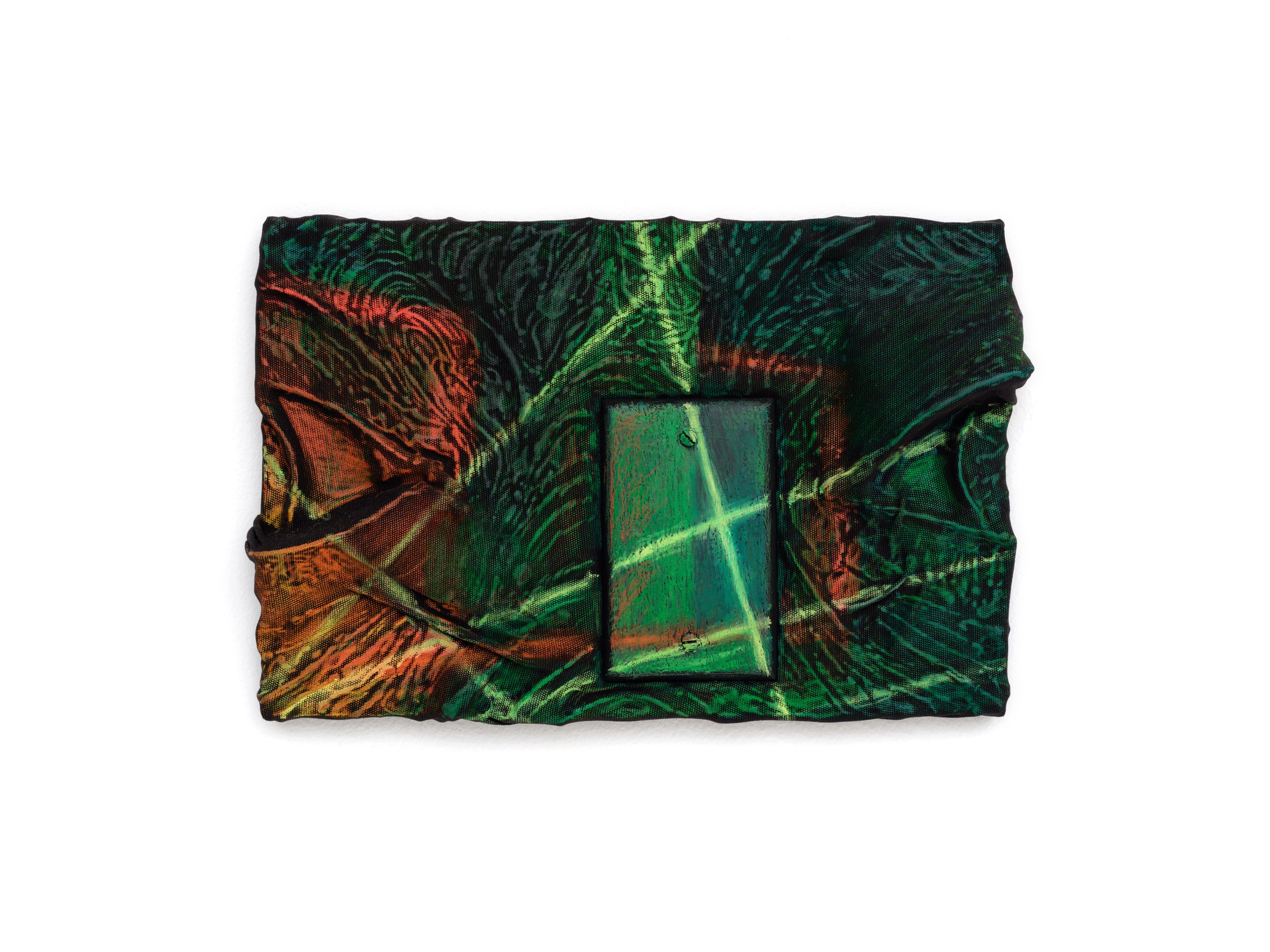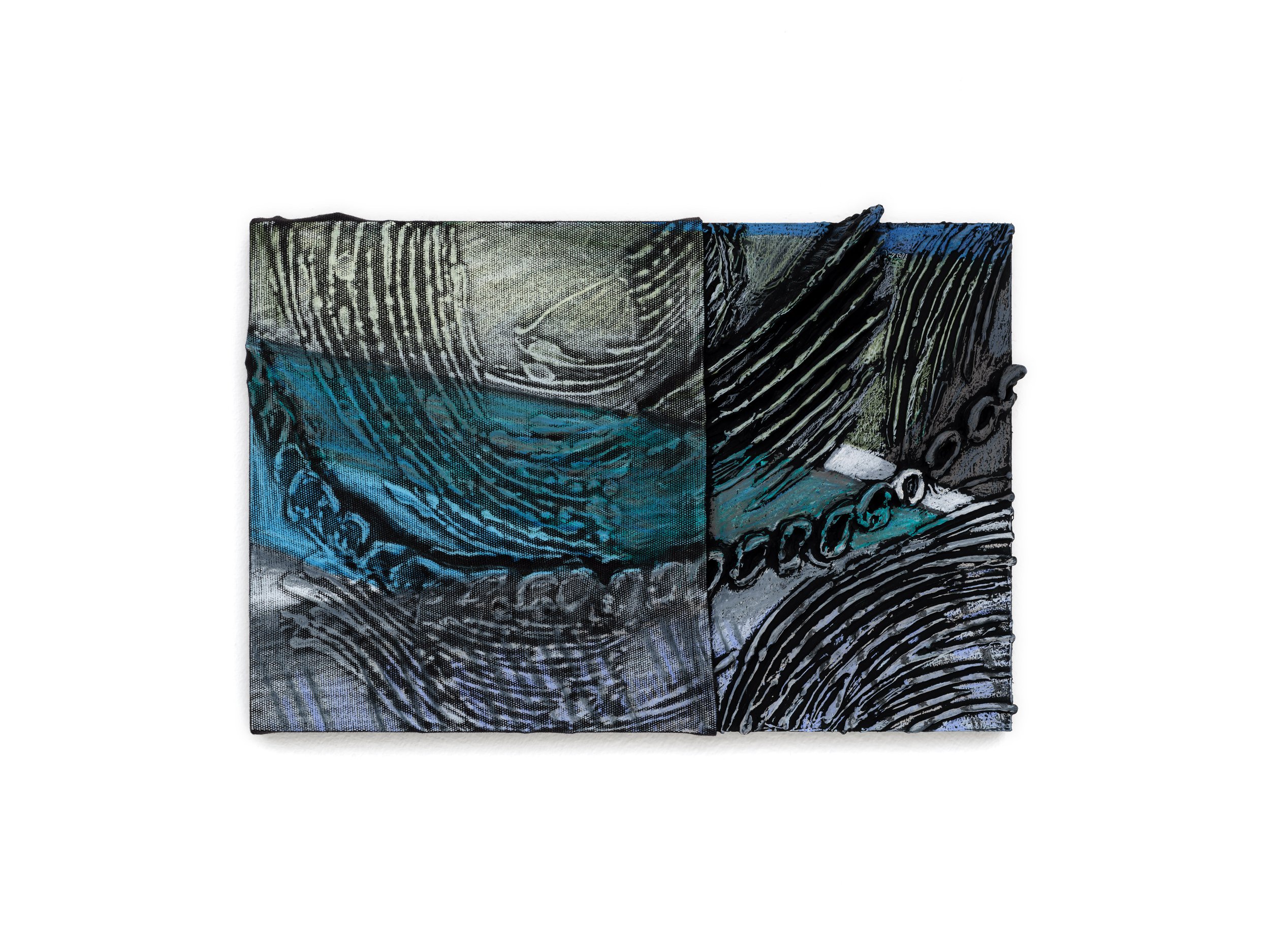Ernesto Renda
works exhibitions news about
nada miami
Booth 4.03
November 30 - December 3, 2022





about
Moskowitz Bayse is pleased to present new works by New York-based artist Ernesto Renda in its debut presentation at NADA Miami, on view at Booth 4.03 from November 30 – December 3rd, 2022.
Across a suite of new paintings and a related video work, Ernesto Renda deepens his engagement with the moving image as a conduit for memories and histories both broadly queer and specifically personal. Long-cancelled television shows, fragmentary documentary clips, and the artist’s own brush with small-screen fame make their way into the works, expounding on one another toward tightly layered objects of lyrical and formal metaphor.
Renda, for whom the moving image and mass media have consistently proven rich grounds for exploring queer conditionalities and codes of seeing, offers a large-scale self-portrait rooted in his own momentary appearance in the background of Real Housewives of New York season 12. In Not So Model Behavior (RHONY, 2020), 2022, the artist stands in shadow-silhouette in his studio, pointing himself out among the crowd at a fashion show. An image in relief of Dorinda’s embittered interview from that episode is interrupted by three early-stage Renda paintings hanging on the wall, among them a replica of Untitled (The Real World, 2002), also included in this presentation. Renda prods at his own feelings of excitement around his supposed 15 minutes of fame, accessing the camp-y delusion of that misplaced pride and self-acknowledgement of fueling our algorithmic, media-based culture.
Elsewhere across the works on view, specific scenarios of watching–of being part of that nebulous thing called the audience–become metonymic acknowledgements of that special and fraught relationship. In two large-scale works based on the mid-90s show Real Sex, a group of ostensibly heterosexual men are led through various activities – dancing naked together, touching one another – in order to gain more comfort with themselves and, in turn, better please their female partners. The scenes of an exotic homosociality were meant to shock, amuse, and entertain; does their treatment by a queer-identifying painter denature those original intentions?
Likewise, in smaller works that the artist calls ‘bricks’, moving images are abstracted by arbitrary cropping and destabilized by applied objects: outlet covers, a bubble level, and an air vent, among others. These works consider the compositional and physical qualities of the projection of one image onto another, onto the wall, and onto the wall-fixtures themselves: slices of angled, participatory realities, arrayed in their simultaneity on the gallery wall, that speak to a series of fleeting formal truths and observations.
Renda’s chosen imagery across the works at various scales is fluid, specific, and ultimately static, coming to describe that familiar experience of watching and of linking the self with media. The works leave space for that relationship to progress naturally, either through affinity or distance. Renda, of course, enters the space of viewership, offering himself as a stand-in for his audience, in full acknowledgement of that relationship’s potential for reciprocity, and its latent precarity.
